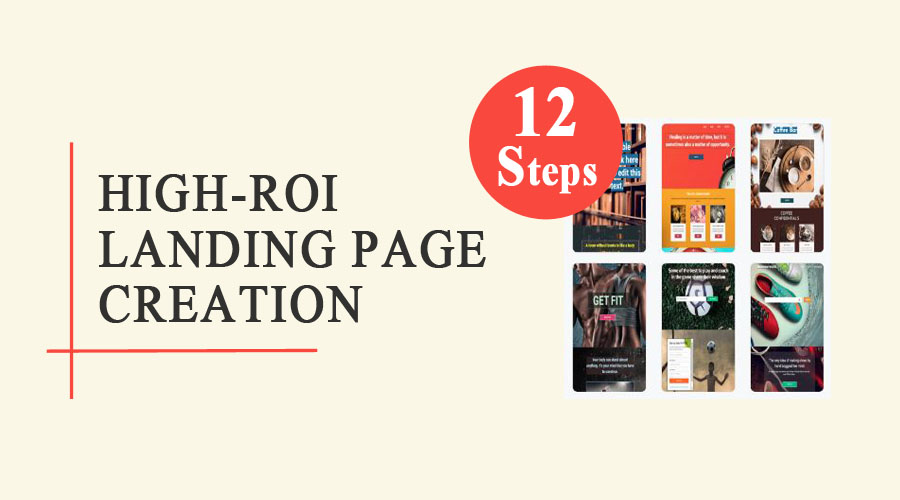
If there were no landing pages, marketers would have had a hard time converting web visitors into paying customers.
Though there are many ways of driving conversions, using landing pages is one of the most effective. If you operate a business, you must add landing pages as an essential resource to your digital marketing toolkit. Just imagine the total number of live websites on the internet; as of now the figure stands at 1.1 billion. Around 252,000 new websites created every day further expand the internet. This is the reason businesses and marketers need to employ landing pages as a potent tool to attract potential customers and convert them into sales leads.
So, let us find out how to combine content, design and user experience to create a landing page that delivers a high ROI. We’ll discuss all of it in detail for your knowledge and maximum benefits from this tool.
What is a Landing Page?
A landing page is a separate, laser-focused web page, which is created to directly guide visitors to take a specific action in a distraction-free manner. It is used for running marketing and advertising campaigns. Marketers use this resource to achieve goals such as signing up for a newsletter, downloading a piece of content or purchasing a product. A visitor comes to a landing page after clicking an on the internet ad or a link in an email. The single goal that this web page is intended to achieve is termed as a ‘call to action’ in digital marketing lingo.
A well-crafted landing page is the main driver behind the success of PPC campaigns, social media and email marketing.
Why Does Your Business Need Landing Pages?
Landing pages offer many advantages for businesses. They are helpful to anyone who is looking to convert prospects and generate leads fast. On an average, a landing page offers a high conversion rate of 26%.
Key benefits of using a landing page are as follows:
Create Buzz: It is a great way of getting people excited and talking about a new product, service or an upcoming event. All you need to do is display the benefits of the stuff that you are about to launch soon.
Run Paid Ad Campaigns: A landing page is the perfect tool for running paid ad campaigns on the internet.
Generate Leads: As talked about before, a landing page helps you gather potential information from prospects and drive conversions by way of a lead-capture form, which is a crucial element of its overall design.
Track Conversions: The best thing about landing pages is that they make it easy for marketers to track conversions (and reconversions). You will be able to track prospects as they move through the marketing funnel.
To achieve all of these benefits and more, you need to build a landing page that has all the key ingredients in the right amount. Designing an effective landing page is both an engineer’s as well as an artist’s job.
Steps to Create a High-Converting Landing Page
It’s now time to get the real task done. Key components that a landing page consists of include headline, call to action (CTA), unique selling proposition (USP), visuals, trust signals and benefits and features of the offering. We’ll talk about each of these and a lot more to help you build a landing page from scratch and use it to convert web visitors into leads and boost your revenue.
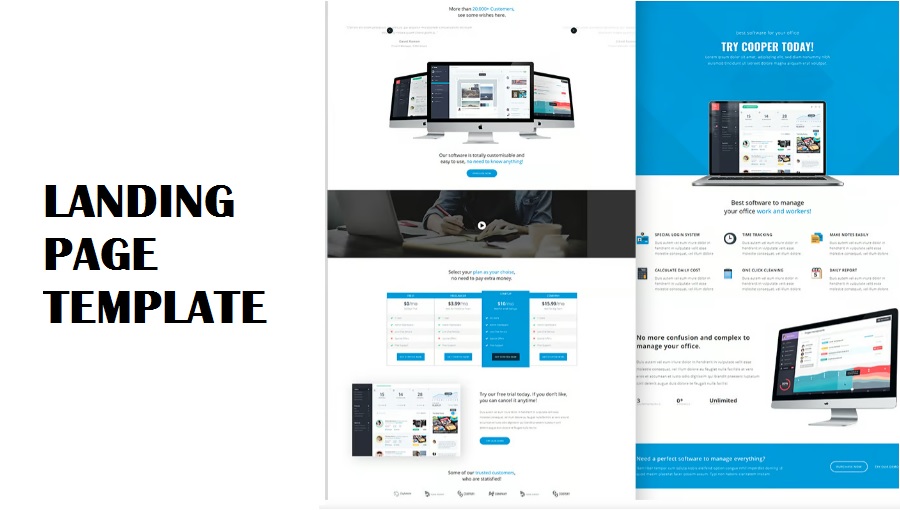
Step #1: Have a Clear Campaign Goal
A landing page focuses on one specific goal. So, before you get started with the design of this resource, you should define what exactly you plan to achieve. When you have a well-defined campaign goal, you will find it easier to create all the essential content and visual elements in a proper manner.
You may want to focus on one of these goals:
– Fill out a form
– Complete a survey
– Download a piece of content
– Register for an event
– Purchase a product
– Capture demographic information
– Sign up for a newsletter
For example, If you want visitors to order a product, you should first know your product in complete detail and how it will make the life of your ideal customer better. The main reason behind a landing page having a high conversion rate is because it doesn’t distract visitors with too many choices. If you adhere to one goal and minimize the amount of choices available, conversion will be much easier and you will see a much higher success rate with your landing pages.
Step #2: Think about Your Audience
Unless you give thought to who your target audience is, you will not be able to craft an effective and high-converting landing page.
It’s a good marketing practice to divide the target audience in various subgroups on the basis of demographics, geographic locations, life events, interests, behaviors etc. Segmenting the audience allows you to laser-target specific subgroups of people with highly-focused and personalized messaging. Such targeting is proven to make customers feel valued and yield higher returns on investment.
If you run a travel company, you can create different landing pages to target different subgroups of travelers such as adventure enthusiasts, solo travelers, business travelers and families with relevant travel advice, tips and packages.
Step #3: Start with a Catchy Headline
You don’t just ‘write’ the headline for a landing page. You need to craft it in a manner that attracts visitor eyeballs, holds their attention and encourages them to go through the content. The headline or the title holds a lot of potential because this the first and the most viewed component on the page.
Follow these tips to create captivating and engaging headlines:
Highlight the Main Benefit: How does your product or service solve the target audience’s problems? You should focus on the key benefits that address the paint points of your prospective customers.
Make it Short: Headlines need to be short. Carefully select the words that you want to include in the headline. The trick is to say the most in the least number of words. The best practice is to keep it under 10 words.
Use Action Words: The language of the heading plays a vital role. Make sure you use action words to ‘motivate’ visitors to take the desired action. ‘Explore’, ‘build’, ‘beat’, ‘achieve’, and ‘succeed’ are good examples of action verbs. Combine them with punchy adjectives to pull in visitors.
Avoid Using Jargon: The headlines should be easy to understand. Keep it free from complicated words and phrases. Jargons reduce scannability and make it difficult for visitors to understand the message.
When crafting the headline for a landing page, keep the literacy level of the target audience in mind. Simple, concise and clear language is always the best for creating headlines that resonate with visitors.
Step #4: Write Persuasive Copy
The purpose of having a landing page is to convince people to take a specific action that is profitable for your business. That is exactly what a persuasive copy does. You should craft the content copy in a way that visitors don’t want to ignore it. They should feel compelled to go through the content to know more about the offering and finally take the action that you want them to take.
Here is how to write persuasive copy for a landing page:
Use the Right Language: Talk to the target audience in a language that goes to their hearts. For this, you will need to take into account the demographics, interests and preferences of the intended audience.
Consider the Length of the Copy: The standard minimum length for a landing page copy is 300 words. So, you can keep it short or make it long. There is no ideal length that you should stick to. The number of words that should go into the copy will depend on your specific needs and objectives.
Be Honest: When talking about the benefits of a product or service, you should not make tall, exaggerated claims. If you make something seem larger than it really is, you will risk losing the trust and confidence of your potential customers. Just keep your explanations direct, clear and lucid.
Appeal to Emotions: Humans are emotional creatures. To make your landing page content persuasive, you should write to appeal to the emotions of the visitors. This means you should evoke unconscious feelings in visitors in order for them to feel an urgent need and take the desired action.
Writing persuasive copies is a great skill to have. Mistakes in writing will not just take away the persuasiveness of the copy, but they will also erode the trust in your company or brand. So, the best idea is to hire a content writer for creating clear, professional and effective copy for your landing page.
Step #5: Create a Magnetic CTA
A landing page without CTAs has no use. Call to actions (CTAs) are a crucial part of a landing page’s overall design. The purpose of a CTA button is to elicit an immediate response from the visitor.
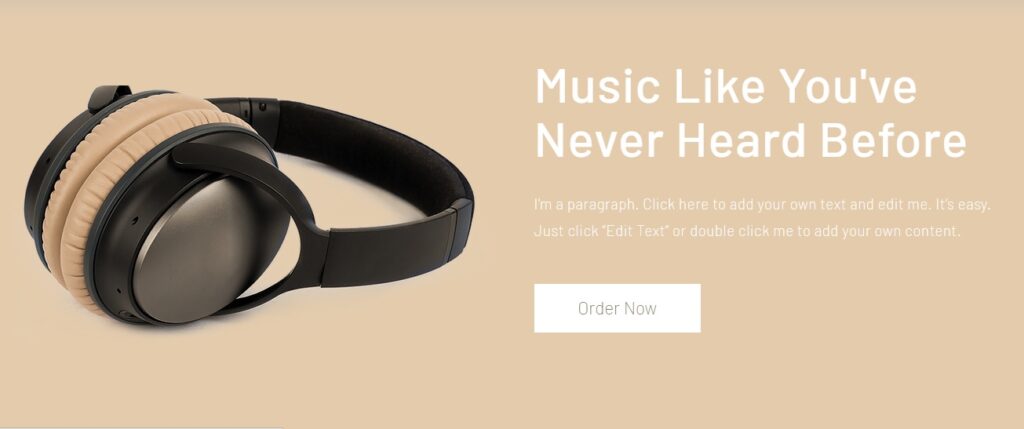
You must have seen common CTAs such as ’Save’, ‘Donate’, ‘Join’ and ‘Sign Up’ on social networking platforms and other websites. All these are created to guide the user or the visitor to take a specific action. But these are generic call to actions. Although they are everywhere and effective, you should create unique CTAs for your landing page in order to convert more visitors.
To create magnetic CTAs, you should follow these tips:
Be Clear: The call to action text should be easy to understand. In simple language, give visitors clear instructions on what to do.
Create Visual Appeal: Not just the copy, but you need to pay careful attention to the look and feel of the CTAs. Combine a beautiful font with a vibrant color to create visually attractive buttons and magnetize visitors.
Make it Look Urgent: Incorporate words such as hurry, limited, now, only and instant to create a sense of urgency among visitors. It should look like that the offering is too valuable to be available for long. The fear of losing or missing out will compel visitors to act quickly to take advantage of it.
Offer Value: It is important for your call to action copies to put the spotlight on the main benefit of performing the intended action. For example, the CTAs ‘Download a Free E-book’, ‘Reserve Your Seat’ and ‘Sign Up & Get Extra 10% Off’ explain quite well what the visitor will gain by taking the action.
Once your CTA buttons are ready, you need to place them in prominent locations on the landing page. It is a good idea to experiment with different copies, font styles and colors and optimize for better results.
Step #6: Include a Form
Forms are an essential component of landing pages because they help grab leads and convert prospects. If you plan for fast conversions, you need to keep the forms simple with a minimum number of fields.
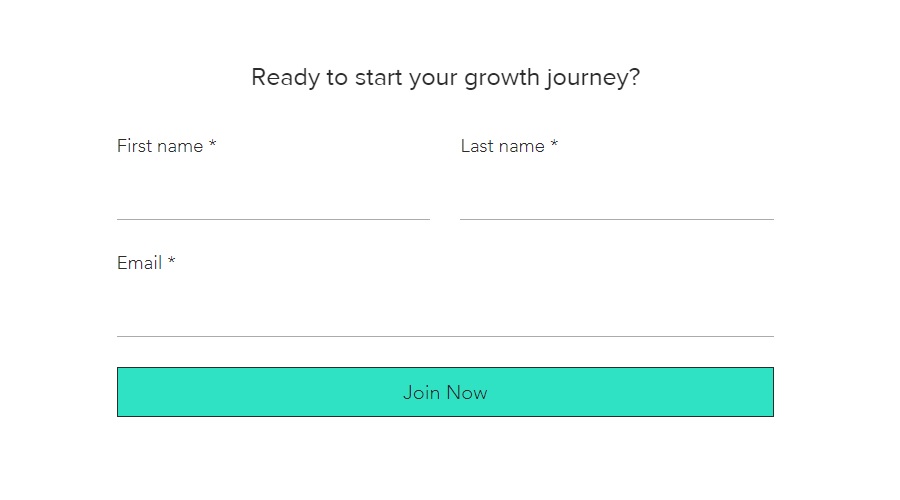
Forms are helpful for collecting a variety of data from prospects and customers. You can use them to collect feedback, demographic information and generate leads. The number of fields you want to have in a landing page form may vary as per your specific goals. You may want to have 3-5 or more form fields. However, limiting their number will result in increased conversions.
Don’t forget to give visitors clear instructions on where to find the form on the landing page and how to submit it.
Step #7: Add Striking Visual Content
Visual elements are proven conversion boosters. You need to add logos, images, videos and other graphical content to lend visual appeal to a landing page and increase the rate of conversion as a result.
Follow these tips to maximize impact through visuals:
Use High Quality Visuals: It is not about how many visuals you include on your landing page. What really matters is their quality. Use eye-catching, high quality photos and video testimonials to make a solid impact.
Match Brand Identity: You know what your brand stands for. Use visuals in a way that aligns with your brand’s personality.
Be Relevant: All your visual and graphic elements should be connected to the product or service you talk about. Select the imagery with some care and thought so that it strikes a chord with the audience.
Tell a Story: Use images and videos to put together an engaging story and deliver the message with a much greater impact. Powerful visual storytelling can turn your landing page into a lead generation machine.
In any case, remember not to make your landing page too heavy. Using too many visuals and unoptimized images will only delay the page’s loading and take a toll on the user experience as a result. Plan what images and illustrations you’ll include ahead of time to get the job done right.
Step #8: Use Trust Indicators
How do you get visitors to trust what you say? The internet remains flooded with all kinds of advertisements and offers. That’s the reason prospects take time to trust and believe claims backed by evidence. If you fail to establish trust in the initial few seconds, the visitor is likely to stay away.
Some good trust indicators include:
i) Customer ratings, review and testimonials
ii) Logos and trademarks
iii) Awards, certifications and affiliations
iv) Number of downloads
v) Subscribers count
vi) Press/Media mentions
vii) Case studies
viii) Celebrity/influencer endorsements
Your landing page needs social proof to sound credible. The best practice is to place the trust signals close to the CTA button.
Step #9: Complete the Meta Description and Title
Don’t ignore or exclude the SEO part. When you create a landing page, see to it that it is also well-optimized for search engine visibility. By adding the meta description and the SEO title, you’ll make it easier for search engines to understand the content of the landing page and what it aims for.
Meta Title: Also referred to as SEO title tag or page title, the meta title text appears on the SERPs. It tells visitors and search engines what your page’s topic is. The ideal title tag length is 50-60 characters.
Meta Description: A summary of the page, it is displayed right under the meta title in SERPs. It is common for search engines to sometimes pull a fragment of text from the page’s content instead and show it as the description. Keep the meta description length between 50 and 160 characters.
Both these SEO settings are crucial, as the title gives visitors the first impression and the description captures their attention and increases the click-through rates. So, make sure you hit the nail on the head.
Step #10: Make It Mobile-Friendly
Not just for desktops, you need to create a landing page that renders well on smaller screens too in order to ensure high conversions. You can’t rely on traditional landing page designs alone in the smartphone era. With the number of mobile users worldwide projected to reach 7.49 billion by 2025, there is no way you can ignore mobile. So, you need to create responsive landing pages.
Use these tips for building a mobile-friendly landing page:
i) Prioritize the download speed
ii) Keep the copy clear and short
iii) Incorporate sticky navigation
iv) Ensure color consistency
v) Optimize layout and visuals
Both your desktop and mobile users should be able to go through your content in an easy and comfortable manner. Based on your specific needs, you may also want to separately plan your mobile content.
Step #11: Test and Optimize
Viola, the task of landing page creation is done. But before the page hits the web, it is a great idea to test it. A/B testing is a proven digital marketing technique that you can use to compare the different versions of a landing page and find out which one delivers the best results based on data.
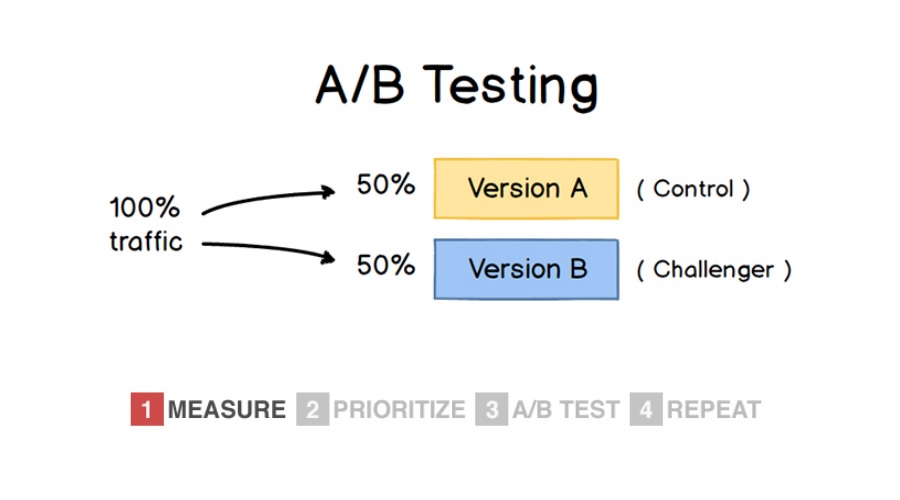
Here’s how you should conduct A/B testing:
Create Two Versions: Make 2-3 versions of a landing page by making little changes in the headline, visuals and call to action. For example, you can give your headline a twist or rewrite it to create its versions.
Split the Traffic: Send direct random traffic to each version.
Track Metrics: Monitor key metrics such as the conversion rate, bounce rate and user engagement for each version.
Analyze: Gather all the data and compare the performances of different versions and find out which one is the winner.
Using A/B testing tools will help you automate the entire process and conduct the test in a quite efficient manner. Optimizely, AB Tasty and Adobe Target are some good tools you can use to A/B test your landing page.
Step #12: Review and Publish
Now that you have found the winner version, give it a final look to ensure it’s free from any kind of design mistakes or copy errors.
Your landing page needs to make a good first impression. Make sure it doesn’t have typos or any kind of grammatical errors. Re-check the mobile version and see if everything is in perfect shape and order. You’re done! Your landing is now ready to be sent out to the world – and to convert.
Need Help with Your Landing Page Creation?
If you plan to elevate your digital marketing and convert more traffic into leads, you should definitely use landing pages. Follow the guidelines and tips mentioned above to unlock the full potential of this powerful conversion tool. Promote a new product, service or special offer. Capture emails and demographic information in exchange for something valuable. Get the most of your PPC ads. There are several other benefits that you can achieve with well-designed landing pages.
Feel free to reach out to me for further clarification and assistance with the design and copy of your landing page.

Leave a Reply